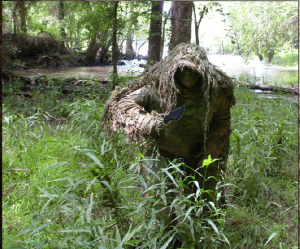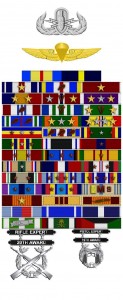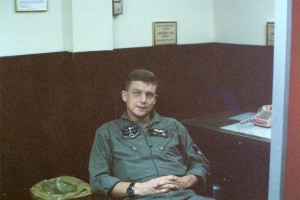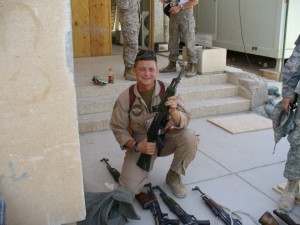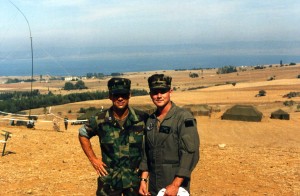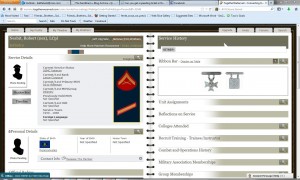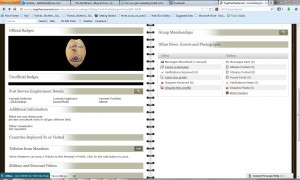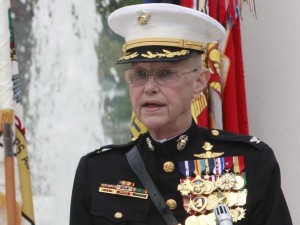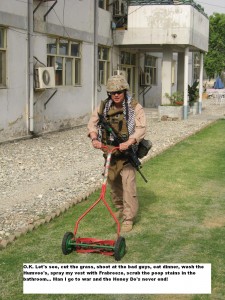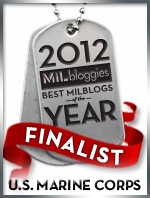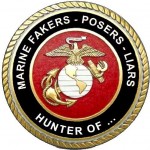February 4th, 2014 Posted in Military | 3 Comments »
The boys over at This Ain’t Hell have put together a great piece on how to request a FOIA request. I have copied it over to here but all the credit goes back to Jonn and Mark. They are and always will be my hero’s, ridding the world of posers one a day. Sad thing is in this day and age of information, folks still think they can get away with pretending to be someone they are not. They do this for Ego trips, to scam money, to scam dating sites, to get the attention they never had. I think they are just truly sick and we have seen them in all different varieties. One guy pretending to be a Navy SEAL was arrested on rape of a minor. Some sick folks out there.
S/F
Taco
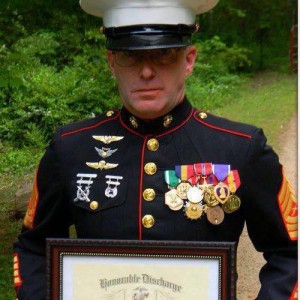
http://thisainthell.us/blog/?p=39455
OK, so you want to file a FOIA request. The question arises – what do you need to do that?
Obviously, you need an envelope, some paper (or the appropriate blank form), a pen, and a stamp. (smile) You also need some information concerning the individual about whom you’re making the inquiry.
In order to file a successful FOIA request, you’ll need enough information about the individual in question to identify them from among of literally millions of sets of Official Military Personnel Files (OMPFs) and/or electronic equivalents on file in the archives. My experience has been that one of the following two sets of info is generally enough:
(A) name (firstname/middle initial/lastname) plus SSN. If the individual served before their branch adopted the SSN as an ID number – typically before the early 1970s – their old service/serial number (NOT the same as the SSN) should also work.
OR
(B) complete name (firstname/middlename/lastname) plus date of birth
PLUS
(C) Approximate dates of service (even just something as broad as “early 1980s” or “Vietnam-era”) and branch of service (Army/Navy/USMC/USAF). If you have the indivdual’s SSN or service/serial number, you might get away with not having this – but I’d include it if it’s available.
Place of birth may also now be required in some cases if not all cases where SSN or Service/Serial Number isn’t available. Per a recent telephone conversation with one of the records technicians, the Federal records repository that has archive responsibility for veterans’ military records (more on them later) has tightened up their procedures and now requires this if SSN is not available. If you have the place of birth, it won’t hurt and will definitely raise the chances of your getting a records “hit” – even if it turns out it’s not strictly necessary.
One word of warning: I would not recommend using unethical or questionable means to obtain SSNs. In fact, I’d strongly recommend that you do not use unethical or questionable means to obtain SSNs for FOIA requests. Various jurisdictions have different laws concerning privacy, and you could well be buying yourself a whole lot of legal trouble – civil and/or criminal – if you do that.
A key point to remember is that the name you submit on your FOIA request must be the name under which the person served in the military. If they served under a variant spelling of their family name (I know of two such cases personally), their records will have that variant spelling. If they served under an alias – or if they’ve legally changed their name since serving – using their current legal name almost certainly won’t work. (Yes, this means using a former servicewoman’s married name almost certainly won’t work if she was discharged before getting married.)
Bottom line: no name match, no “hit”. I understand the same is true for the SSN or Service/Serial Number – if it doesn’t match the name you submit, you’re probably not going to get a records “hit” either.
If you don’t have all of the items of info listed above, the more verifiable information you have the better chance you have of the veteran’s records being located. However, be advised you may or may not get a records “hit” with less information than listed above. And bad info likely guarantees a “miss”, so if you’re not fairly sure of a DOB or POB, best to either omit it or indicate it as being “possible” or “unconfirmed” vice known truth. (This last point is one reason why I generally prefer using a letter vice the government’s preprinted form when filing a FOIA request.)
Once you’ve gotten the info you need, the next step is to prepare your FOIA request and send it to the appropriate agency or agencies. The next article covers that.
Once you have the information identified in the previous article, you need to prepare a FOIA request for information concerning the individual in question.
Like most things in the government, now comes the paperwork. And yeah – there’s a form for that. (smile)
But here, for once you actually have some options. You can either use the US Government’s Standard Form 180 (SF180) or a letter to make a FOIA request. Either will work; which you use is a matter of personal preference. I personally prefer using a letter, as I can tailor the letter to request specific things I think might be of value and which I suspect may or should be in the individual’s records. But as I said – either works.
Whether you choose to write a letter or use the SF180, there are a number of elements a FOIA request needs to contain. They’re listed at this National Archives web page.
Here is a format for a letter that I’ve used in the past when making FOIA requests (Word 97-2003 format). It contains the elements required by the National Archives for such a request, plus some other items that are also very helpful.
If you prefer to use the SF180 for a FOIA request, you can download the current version of the SF180 and use that instead. It’s available in fillable PDF format here. You’ll have to ensure you enter the required items for a FOIA request as you fill it out.
If the individual in question is cooperative and will sign the SF180 themselves to allow a copy of their records to be released to you, that’s great. That should allow you full access to their records.
But IMO, most of the time you probably shouldn’t hold your breath waiting for that to happen. (smile)
Otherwise, you’ll have to submit the SF180 without the signature of the individual concerned (you’ll have to sign it instead) or use a letter that you sign. And without their cooperation, you’ll get only the information from their records that’s publicly releasable. Don’t worry; for most stolen valor cases, that’s more than enough.
For once, with the SF180 the Federal government did an OK job with a preprinted form. The form appears reasonably self-explanatory regarding the “how to” of filling it out. And the explanations on the form answer most common questions.
Unsigned requests – letter or SF180 – are reportedly ignored by NPRC. Whether you use a SF180 or a letter, don’t forget to sign the request.
Whether using a letter or the SF180, there’s something you need to remember while preparing a FOIA request. It is critical to include the phrase “I request all information releasable under the Freedom of Information Act” as part of the request. That ensures you’ve actually requested everything that can be released to the public concerning the individual in question’s records.
It generally seems also to be OK to ask for PII-redacted copies (you should indeed specify PII-redacted if you suspect what you request may contain PII) of any specific items you think might be of value – e.g., certificates or orders for any specific decorations that are in question – that aren’t one of the items normally released to the public. It doesn’t always work, but on occasion I’ve gotten PII-redacted copies of specific orders and other documents that way.
. . .
OK, you’ve got your FOIA request ready. Now what?
Once you’ve drafted the letter or completed the SF180, the next step is figuring out what agency has the records in question – and thus where to send the request. Here, you need to know whether the individual served in the Regular Components of the US armed forces (US Army, US Navy, US Air Force, or US Marine Corps), the Federal Reserves (US Army Reserve, US Navy Reserve, US Air Force Reserve, or US Marine Corps Reserve), or the National Guard (Army or Air).
The component(s) in which the individual served can make a substantial difference. If the individual served in the National Guard, you may need to file multiple FOIAs to get the full and complete picture of their military career.
Service in the Regular armed forces and Federal Reserves (USAR, USAFR, USNR, and USMCR) is always Federal service. An activity of the US National Archives called the National Personnel Records Center (NPRC) has the responsibility for archiving personnel records relating to Federal military service. They assume this responsibility when an individual receives their final discharge from the military or retires. NPRC is located in Saint Louis, MO.
However, for completeness – to get the “whole story”, so to speak – you may need to file multiple FOIAs on someone who had National Guard service. They may have done some duty on state vice Federal active duty orders which is relevant to their claims.
This sounds far more problematic than it usually is in reality. Most questionable claims relate to combat service, combat decorations, or special qualifications. Any service in combat will be Federal service (National Guard service while mobilized to support combat operations is Federal service); the NPRC should have complete records pertaining to all of an individual’s Federal service, and generally does. Ditto attendance at most service schools that confer special qualifications (aviation ratings, Special Operations qualification, BUD/S, etc . . . ).
For veterans (e.g., those no longer serving in a Regular or Reserve component, including retirees) with Federal service (active duty and/or USAR/USAFR/USNR/USMCR), NPRC processes FOIA requests regarding military records. This includes all who have been discharged or retired from any form of Federal military service. If the individual served in the Regular or Federal Reserves of the armed forces, the FOIA request is sent to
National Personnel Records Center
ATTN: FOIA Requests
1 Archives Drive
Saint Louis, MO 63138
If you’re in a hurry, you can fax your FOIA inquiry instead. The fax number is at this link. The link also gives a different fax number in the event you have an “emergency request” with a deadline; examples given of such emergencies are for funerals and “upcoming surgeries”. (Yeah, I don’t quite understand that last one either.)
As far as I can tell, NPRC doesn’t accept scanned copies of FOIA inquiries sent to them via e-mail. Why is a fax OK but not a scanned version of the same original sent by e-mail? Damned if I know. If you figure that one out, maybe you can explain it to me.
I can’t stress this enough: you should always send a FOIA to NPRC, even if the individual claims to have served only in the National Guard. This is because the individual may also have some Regular or Federal reserve service (or Federal service while in the National Guard – e.g., for training or mobilization) and thus have records at NPRC as well as with their state. Most National Guardsmen have at least some Federal service for initial training. Further, a deployment to combat as a National Guardsman will definitely be Federal service for which documentation should be on-file at NPRC.
Bottom line: if you get a “hit” at NPRC, that will often answer most if not all questions about an individual making suspect claims. That’s especially true if the claim relates to combat service or combat decorations.
If the individual served in the Army or Air National Guard, you may also need to send a FOIA request to the state (or states) in which the individual served in the National Guard to get the “whole story”. This is because much National Guard duty is technically state service vice Federal, and the individual states maintain their own records for state service. This document lists (as of Aug 2013) the proper addresses and contact numbers for National Guard FOIA requests for all US states, DC, and US territories. The document technically lists Army National Guard FOIA offices, but many states seem to have a combined Army/Air National Guard FOIA office. If it’s an Army-only office, they should at least be able to give you contact info for their state’s Air National Guard FOIA officials.
. . .
http://thisainthell.us/blog/?p=39456
That’s a good stopping point for today. The next article will cover typical times and potential costs associated with FOIA requests.
Once you’ve received a FOIA reply that’s not a “we couldn’t find anything” letter, you’ll need to figure out what it’s telling you. Depending on your background and the service involved you may be able to do that yourself. But in many if not most cases, you’ll need to find someone with substantial military experience in the same service and era as the individual in question to assist you in interpreting what it says.
For example: if the individual served in the USMC during Vietnam, it’s a good idea to get someone with Vietnam-era service (or with an extensive military background) to assist in evaluating the FOIA reply against that individual’s claims. That individual must be someone who “speaks Marine” and understands USMC records and terms.
I can’t emphasize this enough: if you can find someone to help you with an extensive military personnel background in the service concerned, you have struck gold. Their help will be invaluable. Buy them a drink – or dinner. (smile)
Specialty experience (e.g, an actual former Special Forces guy if you’re dealing with someone who’s claiming Special Forces status or qualification) may also be very valuable in identifying lies and exaggerations concerning specialty qualifications and service. “This Ain’t Hell” is also an excellent resource for sorting out FOIA replies – Jonn absolutely hates military fakes, and he can call on a load of expertise to assist in figuring out if a claim might be legit or not.
Don’t be afraid to ask for help. No one knows it all. There’s simply too much to know.
Am I punting here? Damn straight. At first, you’ll likely learn something new with at least every other FOIA reply you get relating to a sister service – if not with each one. And you’ll learn a lot about your own service’s history and practices that you didn’t know before, too.
Unless it’s your service and your era, don’t try to figure it out all by your self; you’re likely to get it wrong. And even if it is your service and era, no one knows it all.
Ask for help, if for no other reason than to get a second set of eyes on the docs.
Other Considerations and Miscellaneous Thoughts.
1. To reiterate: even if an individual claims to have only National Guard service (USMC and Navy don’t have National Guard elements, but Army and USAF do), it’s worthwhile to send NPRC in Saint Louis a FOIA request concerning the individual. If the individual ever had Federal service while in the National Guard (e.g., for training, was mobilized, or otherwise served on Federal active duty), the NPRC should have records relating to at least that part of their service. Most National Guard members serve at least a few weeks or months on active duty for initial training, so NPRC should at least have a record of that (not a 100% guarantee, but they should and usually do). And combat-zone service will be Federal.
In short: you could get the answer you need from NPRC – particularly if the questionable claim concerns service in combat or a combat decoration – with no need to file a FOIA with the state (or states) in which the individual served in the National Guard. However, you may still need to file a FOIA with the appropriate state(s) for a National Guardsman to ensure you get the individual’s complete story.
2. If you’re not sure about the individual’s specific branch of service, it’s probably OK to list several. For example, if someone tells you they served in the “Army” but doesn’t go into more detail, it’s OK to list their service as “US Army, US Army Reserve, and/or Army National Guard”. Many people have service in both the Regular Army and the Army Reserve components (USAR and/or ARNG); listing all three may ensure a more comprehensive search. (The records are supposed to be consolidated, but I’d guess it’s possible that some records don’t get “married up” correctly and a few individuals end up with separate listings for their active and reserve records.) It shouldn’t hurt to indicate both (or all three). Ditto if the individual claims to have served in more than one branch of the military (e.g., USMC and Army).
3. It’s a good idea to be very careful in how you gather information regarding an individual you suspect might be lying about their military service. Eliciting information from or about them should probably be done carefully so as not to raise suspicion about why you’re asking. And I can’t stress enough: I most strongly recommend staying away from anything unethical or illegal in gathering information for a FOIA. Getting fired, sued, or prosecuted just ain’t worth it.
4. Depending on circumstances, when the situation allows another tactic that might be useful would be to tell the individual up-front you need to verify his/her claims through official channels and ask him/her to sign an SF180 giving you access to all or part of their military records. (I really wish journalists would do this.) If they balk, that may well be a “red flag” indicator they have something to hide.
5. If you end up “getting the goods” on a fake, I would strongly recommend that you be very careful if/when you confront the person. I’d recommend you think twice about confronting them in person. If you elect to do that, I’d very much recommend you do so in a public place – and bring backup/witnesses with you to the confrontation. If an individual is lying about their military record, they obviously have at least that much about their past to hide; they may have other questionable (or criminal) tendencies or history as well. The individuals you bring as backup/witnesses may well come in handy in case the individual becomes threatening and/or violent.
6. A caution about negative replies, which I can’t stress enough: if NPRC cannot find an individual’s records, be very careful about interpreting their “we can’t find any records” reply. DO NOT take that “we can’t find those records” as a categorically definitive statement that the individual never served. If the name and SSN aren’t a match, you will get that answer (I’ve made a couple of typos and gotten a bad result because of doing so). If you didn’t send enough information to allow a definitive match, you’ll also get that answer. Ditto if the guy/gal served under another name, or with a different SSN.
Moreover, sometimes the records technicians at NPRC goof, and send back a false negative (that can happen if the records are checked out at the time and the servicing technician doesn’t notice that fact, or otherwise errs). A post-service legal name change, service under an alias, or the use of a different SSN (legally or otherwise) can also trigger a negative. And as I noted previously, NPRC is allegedly tightening up their release policies. I’d guess they sent out a few bad FOIA replies containing info about the wrong individual (that’s happened on at least one FOIA reply I received) and that tightening up policy is their remedy.
Bottom line: a records “hit” is fairly conclusive. A “miss” is just that: a miss. Unless you had a known correct and complete name and SSN – and are certain that the individual used that exact name and SSN their entire life, including during any service in the military – a records miss is NOT definitive proof of that the individual did not serve. And even if you had the correct name and SSN and the individual served under than name and SSN, sometime the techs at NPRC goof. They’re human, too.
7. However, if a guy/gal says that NPRC can’t find them because their personnel records or decorations are “classified”, that’s pure bovine excrement. Operations may be classified, but personnel records are not.
Virtually the only classified items found in military personnel records are an occasional classified evaluation – and classified items are very rare. (Evals also aren’t something you can get information about with a FOIA request.) Everything else in an OMPF is virtually always unclassified; a placeholder is there in the individual’s records when a classified item that normally should be there is stored elsewhere. And the placeholder indicates what that item is – e.g., a statement to the effect that the individual has a classified eval.
Decorations aren’t classified. The justification and/or circumstances surrounding an award might be, but the fact of the decoration itself isn’t. Ditto for the orders announcing it and the citation. Those are all unclassified.
8. I’m not absolutely certain about this, but FOIA inquiries concerning Navy and USMC records for recently discharged veterans seem to me to take a bit longer than others. While NPRC has archive responsibility for all veteran’s records, since the early 2000s the services have maintained electronic records vice on paper. The Army gives NPRC access to theirs (I think the Air Force does too) for the purpose of FOIA requests concerning veterans. The USMC and Navy may not; NPRC sometimes seems to send a FOIA request to the Navy or USMC for action if/when they get a “hit” on recent Navy and USMC records. Or something else may be going on, or I could be in error. But that’s my impression.
9. On very rare occasions, records at NPRC may be incomplete. This is very rarely the case, but it can happen. Be careful about publicly “outing” someone who actually has other documentation backing their claims. If possible, get a copy of that other documentation and have someone who knows what “right looks like” from the time in question take a look at it first. And if you can’t find anyone who knows what “right looks like” from a particular era, well, TAH often can. (smile)
Fake documents are usually pretty obvious to someone who knows what “right looks like”. Lord knows, fake documents appear to be common when it comes to award certificates and DD214s.
10. Claims that “my records were burned up in the fire” are also likewise BS for virtually anyone who was discharged after the Vietnam War ended – or who served in the Navy or USMC, regardless of when they served. The NPRC fire occurred in July 1973; it affected almost exclusively records from the Army and USAF.
The records affected by the fire were:
- Army: personnel discharged between 1 November 1912 and 1 January 1960 – estimated 80% loss
- USAF: personnel discharged between 25 September 1947 and 1 January 1964, with names beginning after “Hubbard, James E.” – estimated 75% loss
- Virtually no Navy or USMC records were affected by the fire. The NPRC fire did not affect the portion of the building housing USN and USMC records. While the precise number is not known, the best estimate of Navy and USMC records affected is that less than 3 dozen USN/USMC records might have been affected (it’s not definitively known that any were; that figure is an upper limit). These were records that had been removed from normal storage and which might have been in analysts’ desks in the area affected by the fire at the time that the fire occurred. No Navy or USMC personnel records in routine storage at NPRC were affected.
- Not all records affected by the fire were destroyed. Many records were damaged, but were not total losses. (As I said in an earlier article: I’ve seen at least one FOIA where the copies of documents from an individual’s records provided with the reply appeared to be singed or burned at the edges.) A surprising number of records were damaged but were at least partially recovered after the fire.
- Finally, many individual OMPFs that were lost have been at least partially reconstructed from alternate records sources.
I’ll have more info on the fire in a future article.
Bottom line: claims that an individual’s records were “destroyed in the fire” are virtually always BS. It’s definitely BS if they were discharged after December 1963, or if they served in the Navy or USMC. Such claims usually don’t even qualify as a “nice try” when you start asking questions.
11. Claims that “my records were lost” are similarly almost always bogus. Do lost records occur? On rare occasions, yes. But NPRC stores approximately 57 million military records today (plus over 40 million personnel files relating to former Federal civilian employees). The odds of that being the case for someone making wild claims of derring-do that are otherwise unsubstantiated and can’t be otherwise documented are, frankly, so close to nil as to be laughable. And as the 1973 records fire shows, lost records can generally be substantially recovered from other sources. For starters, DFAS keeps pretty good records of who they paid. (smile)
12. Finally: the articles I’ve written here apply only to veterans who’ve been discharged from all components of the military or who have retired. If you’re dealing with someone who’s currently serving in the military (either full-time or in the reserve components, including the National Guard), the rules on what you can and cannot find out using a FOIA request are quite different. The process described above won’t work reliably for those who are still active or reserve military; at best you’ll get a partial answer, and you might get no answer at all. They also may or may not work if someone has been discharged from active service but still has a military service obligation and is technically still a member of the IRR. (I think they’ll work under that last scenario, but I’m not positive.)
I don’t have a clue as to how to do a FOIA request for information about someone who’s still serving – or what can be released. All I know is that the process – and rules about what can be released – are very different.
The answer is: well, that depends. (smile)
Cost.
It’s theoretically possible you may be charged a fee, and fees can be substantial for extensive requests requiring a great deal of research or copying of documents.
However, it also seems that NPRC generally will waive fees for a simple request from private individuals unless the individual concerned was discharged more than 62 years ago. From what I’ve seen, most requests for info (e.g., “all info releasable under the FOIA”) for military records less than 62 years old seem to end up being simple requests.
Let me stress the following: the “magic words” here seem to be that you should indicate that you’re “a private individual making the request for personal, nonprofit use to confirm or refute potentially false claims made by an individual concerning their military service” and that “confirmation or refutation of these claims is in the best interests of the government”. For requests made using this justification, NPRC seems to waive fees routinely.
I’ve only been asked to pay a fee twice, and both were for records from World War II that were indeed more than 62 years old (those have to be pulled from archival storage, and that fee apparently can’t be waived). The fee for archive retrieval of records is currently $75 – but for archival records you supposedly get the individual’s complete record. (Apparently archival records are considered fully public.) NPRC will notify you up-front before sending anything if the request is archival and the archive retrieval fee is required.
If you’re making the request as a commercial entity, NPRC may not waive the fee. Journalist and/or prospective employer requests may count as commercial requests. (If you’re doing a FOIA request for either of those purposes, you might want to consult a lawyer first as to whether or not it should be considered “for commercial purposes”.) However, even there the simple request (e.g., one that takes less than 2 hrs total time and somewhere around 10 pages duplicated, if I recall correctly – though on occasion I’ve gotten close to 20 pages sent to me gratis) or public good waivers may apply. Fees can apparently also be waived if providing the information is deemed to be in the public interest.
On all FOIA requests, I recommend you indicate an amount up to which you’re willing to pay. As noted above, it’s very unlikely you’ll be charged anything. However, if you don’t indicate an amount, NPRC will assume you’re willing to pay up to $50.00 (and no, I really have no idea how they came up with this number). They’ll notify you if there’s a cost associated with answering your request. I can’t remember if they supposedly send a bill after the fact or await payment before sending anything.
I also wouldn’t sweat it much. As I said previously: for non-archival requests (records less than 62 years old), I’ve never been charged a fee.
FOIA requests to individual states for information from National Guard record may have fees charged by the state involved. Maryland does ($15, if I recall correctly). The few other states with whom I’ve filed FOIAs don’t seem to charge a fee – but the sample size here is only a handful. I thus can’t give any general rule for states regarding what to expect regarding fees. It truly varies “from state to state”.
Bottom line: most requests will only cost you a stamp plus the time/effort to make the request. But some will require multiple requests, and once in a great while you might be asked to pay a fee.
Time.
These days NPRC seems to takes about 4-6 weeks typically to answer a FOIA request, but there’s quite a lot of variance – I’ve gotten a “hit” reply once in less than a week (no, I didn’t paperclip any currency to the request), while some have taken 2-3 months or longer. I can’t really speak for how long National Guard requests should take, as I’ve only ever filed a handful of those and the timing seems to vary widely.
For some reason, Navy and USMC requests concerning recently-discharged vets seem to take longer than others these days. Not positive why that’s happening, but that’s my impression.
***
What you will get, sooner or later, is a reply to your FOIA request. (If you don’t, you need to refile it!)
Yeah, I know: “No sh!t, Sherlock – I figured that much out already.” (smile)
Seriously – what you will get in the reply to a FOIA inquiry varies. I’m going to discuss a few common responses you might get from the National Personnel Records Center. I’m not going to attempt to discuss replies from state National Guard FOIA offices, as (1) I haven’t submitted many of those, and (2) from the few replies I’ve seen, their formats seem to vary.
And on occasion, I still get replies in formats, or with things attached, that I’ve never seen before. So what follows is definitely not comprehensive.
What You Won’t Get
First, let’s discuss what you won’t get.
You won’t get the individual’s complete OMPF unless they authorized you in writing to receive it (or they’re dead and you’re their next of kin). The only pertinent exception here is if the record is more than 62 years old (e.g., they’ve been completely discharged from he military for 62 years or longer). Then, supposedly you get a copy of the individual’s complete file – but you’ll have to pay a fee (see the previous article).
You also won’t in general get anything containing an individual’s PII (e.g., SSN, home of record address, etc . . . ). Any documents you receive that originally contained PII/other non-releasable information will have that info redacted. Or at least that info is supposed to be redacted; on rare occasions, NPRC misses something they should redact. Their clerks are human, after all.
You also won’t get a complete DD214 showing characterization of service and/or reentry codes and “lost time”. You may (or may not) get a copy of the individual in question’s DD214 (FOIA replies concerning Navy and USMC personnel sometimes seem to include one) – but if so it will have that information redacted. For some reason, the type of discharge, reentry code, and lost time isn’t considered public record information. (IMO that info should be publicly releasable, but it’s not.)
What You Will Get
What you will get is a transcription or photocopy (or some of each) of the publicly-releasable information that is contained in the copy of the individual’s OMPF stored in Federal archives. If other items are specifically requested you may – or may not – get PII-redacted copies of those other documents as well.
Don’t worry. What you get will generally be sufficient to prove, to a reasonable degree of certainty, whether or not someone is making a false claim of military service, decorations, or qualifications.
In this article, with two exceptions I’ve redacted the names of individuals on documents I’ve used as examples. The exceptions are ones that were previously posted here at TAH about people we all “know and love”.
Item 1: The Cover Letter
For a FOIA inquiry submitted to NPRC, you should get at least a cover letter in their reply. I’d recommend keeping this – it has their internal request number on it. You’ll need that if you decide to file a follow-up request and/or dispute their denial of some information you think is in the file and should be released to you.
The NPRC cover letter will generally be in one of three forms:
(1) A cover letter saying, in effect, “you didn’t send us enough information to find anything”. Here’s an example. (Most examples in this article are in Adobe PDF format.)
The key here is caveat in the first paragraph – e.g., that the reply does NOT mean the individual never served in the military. A reply of this type is not definitive proof the individual on whom you filed the request never served in the US military.
You may get this if you didn’t send NPRC enough information to unambiguously identify the individual in question. Reportedly NPRC has tightened up their policies recently on what constitutes “enough” information (supposedly they now require complete name,DOB, place of birth, branch of service, and approximate dates of service if SSN is not provided). I wouldn’t be surprised if this is now their “default” reply when a request has less than the required amount of info – even if the name is something as oddball as “Christophos Constantine Cornholio Polychronopolis”.
(2) A cover letter that strongly implies the individual never served, but doesn’t outright say that.
IMO, the key here is the part where they say they “conducted extensive searches of every records source and alternate records source at this Center” (or words to that effect). While not a legally a “slam dunk”, to me this type of reply strongly implies that NPRC had enough information for a definitive match – and found nothing. IMO, it means that the guy/gal more likely than not didn’t serve UNDER THAT NAME or USING THAT SSN. However, a post-service legal name change and/or service while using another SSN might still be possible. It’s also possible that NPRC goofed – e.g., “fat fingered” something when searching for the records.
A second, IMO stronger variant of this type of reply may say that they’ve also checked external entities like the FBI and got nothing.
However, as with the first case – this is also not by itself definitive. You can’t necessarily rule out service under another name and/or using another SSN. Or NPRC simply could have goofed – e.g., maybe the person doing the search misspelled the name or reversed 2 digits in the SSN or Service/Serial Number.
(3) A cover letter saying, in effect, “we found those records”. Obviously, this is what you want to see. It’s definitive proof that the individual in question did serve in the US military – and that the Federal archives have records on them. I’ve seen both one page and two-page variants of this type of letter; both are included here.
On rare occasions, the cover letter may list information about the individual’s assignments, decorations, qualifications, etc . . . . However, in general those items are provided on another attachment or on multiple attachments.
If you asked for specific items they feel they can’t send you without the veteran’s consent or proof that you’re next-of-kin, you may get this variant of NPRC cover letter. Sometimes asking again and politely explaining that you’re asking for a PII-redacted copy of something that documents publicly-releasable information (like award orders) will help if that’s the case. But if you’re asking for something that’s not releasable to the general public – like the type of discharge – that will almost certainly be a “NO GO”.
Finally, if the records were affected by the 1973 NPRC fire, you may get a cover letter that looks like this.
These aren’t the only possible NPRC cover letters you might see; I keep seeing new versions and variants periodically. But these or similar variants seem to cover the great majority of cases. They (or something similar) will probably cover most replies you’ll see.
Item 2: NA Form 13164
The second item you will see in virtually all cases when NPRC locates the records in question is National Archives Form 13164 (NA 13164). On rare occasions, the cover letter may contain the information instead – but those are in my experience fairly rare and generally seem generally to come from other sources vice NPRC. I’ve only seen a handful of those.
Information releasable under the FOIA will be either transcribed to the NA 13164, provided as attachments, or both. If a person only had a single, relatively uneventful term in the military, the NA 13164 may be all you get besides a cover letter.
The NA Form 13164 looks like this. (This is an example of where the NA 13164 is all you get besides a cover letter.)
If there are attachments, the NA Form 13164 will look like this, with one or more boxes saying “see attached” or words to that effect. The attachments should be extra material that expands on (or contains in full) the information for the blocks indicated.
Most of the information provided on the form will be self-explanatory. Two items that require care, however, are the “Rank/Grade” block and the “Transcript of Court Martial Trial” block. The former is the rank at time of discharge. While the rank in the “Rank/Grade” block is generally the highest rank or grade held (or for a retiree, their retired grade), that is not a guarantee. The individual could have served at a higher grade, but been reduced administratively or via court-martial prior to discharge; if so, that fact won’t be noted on the NA Form 13164 (it may be present in or reasonably inferable from other information provided as attachments, but there’s no guarantee that will be the case).
Secondly, an individual who served successfully as an officer but who is administratively reduced during a drawdown and reverts back to enlisted status – or who has a break in service and returns to service as an enlisted guy/gal – retires at the highest grade successfully held. It’s thus possible for a guy/gal to have a final rank of E6 or E7 on a NA Form 13164 and legitimately retire at an officer grade. It’s not terribly common, but it does happen.
Lastly, don’t read too much into the comments in the “Transcript of Court Martial Trial” block of the NA 13164. Common entries are “NA” or “N/A”, “Not applicable”, “Not available”, and “Not in file”, or similar language. They all seem to be used interchangeably. In particular, I don’t think “Not in file” or “Not available” implies anything one way or the other about whether the individual was or was not ever tried by court-martial. I think the term used there is generally due to the personal preference of the technician preparing the request. Best I can tell, they all seem to mean “there’s no transcript of trial in that file” – and that’s all.
Item 3: Attachments
Attachments to the NA 13164 are variable as hell. Typically, they’re PII-redacted portions of documents from the individual’s OMPF – e.g., DA Form 20 or 2-1, USMC “page 3”, redacted orders/award certificates, a photograph, letters, etc . . . . (On occasion, a USMC or USN FOIA may have a heavily redacted copy of the individual’s DD214 – see this article about the Chippendale SEAL for an example.)
Representative copies of what you might see are provided here:
Example Army attachments. This is an unusually detailed set of Army attachments.
Example USMC attachments. This is representative of what’s commonly provided for USMC attachments.
Example very old USAAC/USAF attachments. Very unusual. This file was one affected by the 1973 NPRC records fire. I’d guess these are actually secondary records drawn from other-than-routine sources that were used to reconstruct the file after-the-fact. (I’ve seen at least one other set of attachments where the photocopied originals literally appeared to have fire damage around the edges.)
Example Navy attachments may be seen in the link earlier in the article regarding the Chippendale SEAL. That example shows both a redacted DD214 (sometimes the Navy and/or USMC provide one) and a typical Navy attachment.
As you can see from the above, the specific documents provided as attachments will vary from service to service, from era to era, and from request to request. There really is no way to anticipate what will be attached to the NA Form 13164 – if anything. I’ve seen photos and certificates of training, letters, award certificates, eval extracts (but not whole evals), and pay book entries.
In short: the attachments to a FOIA reply are kinda like Forrest Gump’s box of chocolates. You never know what you’ll get. (smile)
. . .
Well, that’s it. I hope the articles in this series have been helpful. Lord knows, there are enough fakes out there that everyone working to expose them could use help.
http://thisainthell.us/blog/?p=39667
Oh the Records Fire…
Many of us have heard something about a “records fire” that destroyed many military Official Military Personnel Files (OPMFs) years ago. And we’ve also heard some people claim that “my records were destroyed in ‘the records fire’ – and that’s why there’s no record of my <insert award for valor/Special Operations qualification/service here>”.
But many people don’t know much more than the fact that a fire once happened where many military records were stored. The reality is that liars using the excuse of a “records fire” to justify false claims about their military service are regrettably common. Such claims are almost always pure bull.
This article will give the facts concerning that fabled “records fire”. In it, I’ll give some background about the storage activity, its history, and its design – which contributed to the severity of the fire. I’ll also briefly discuss the fire and its impact.
And, finally, I’ll discuss what records were – and what records weren’t – affected by the fire. I’ll also provide some references that provide much more detail.
BLUF: if someone was an Army retiree alive in July 1973; served in the Army after 1959; served in the USAF after 1963; or served in the Navy or USMC – it’s a virtual certainty that their records of service were not affected by the fire. Any claims to the contrary are pure, unadulterated organic fertilizer of the type produced by male bovines capable of reproduction.
The National Personnel Records Center
The National Personnel Records Center (NPRC) is located in the Saint Louis, MO, metropolitan area. For years it was located at 9700 Page Avenue (the same address as the US Army Reserve’s Personnel Center – indeed, they shared the same Federal compound). However, in 2011 NPRC moved to a new, more modern facility. Their address today is 1 Archives Drive, Saint Louis, MO.
NPRC came into being in 1966. What follows is an abbreviated history; one of the links at the end of this article provides more details.
Prior to World War II, personnel records for separated Federal personnel – military and civilian – were scattered among literally thousands of locations nationwide. The dramatic expansion of Federal employment during World War II – particularly military employment, which rose by somewhere around 15 million during the war – pointed out the need for both better management of such records and the need for some degree of centralization.
During World War II, the military services began centralizing their personnel records archives (e.g., those dealing with separated personnel). The same was also true of Federal civilian personnel records for separated employees. This process accelerated in the immediate post-World War II period.
The Federal Records Center was created in Saint Louis in the early 1950s. It’s goal was to consolidate records of former Federal civilian employees. The military did the same – in the same general area. In the mid-1950s, a new facility was constructed in Overland, MO (on the west side of what is now the Saint Louis metro area) to house archived military records. The decision was made to transfer control of this facility – the DoD Military Personnel Records Center (DoD MPRC) – to GSA in 1960 (the FRC had been under GSA since 1951).
By 1966, the FRC and MPRC had effectively completed their records consolidation roles. That year, the decision was made to combine these activities into a new entity – the National Personnel Records Center, or NPRC. At the time, the NPRC remained under GSA. (The National Archives and Records Administration – NARA – was not created until1986; the US National Archives and NPRC now both fall under NARA.)
The Facility
The facility housing the former DoD MPRC was built for the Army in the 1950s. It was a huge, 6-story, relatively open building – measuring 283′ by 728′. It was transferred to NPRC when NPRC was created in 1966.
When completed, the facility had neither sprinkler systems nor internal firewalls. The lack of sprinkler systems was the result of a debate within the records management and archive community when it was constructed (mid-1950s) regarding whether sprinkler systems posed more risk of damage to records in storage than did fire. The “no sprinkler” side won the argument, and the facility was built without them.
In one of the great ironies of history, the same year the building was completed (1956) the Federal government decided that the risk of fire was indeed greater, and mandated that all new records storage facilities have sprinkler systems. Existing facilities were apparently “grandfathered”, however, and a sprinkler system was not installed at the facility prior to 1973.
The lack of internal firewalls, however, was IMO both inexplicable and inexcusable. Regardless of whether or not sprinkler systems were used, fire was a foreseeable danger. Internal firewalls IMO damn well should have been included as a design feature in order to limit damage in case of fire.
In essence, in July 1973 the building was a huge, 6-story warehouse. At the time of the fire it was mostly filled with filing cabinets full of paper records – far more than originally expected (space was becoming an issue). Unfortunately, the Federal government was to find out the hard way that installing sprinkler systems and having internal firewalls would have been damn good ideas.
The Fire
The fire at NPRC began sometime during the night of 12 July 1973. The precise cause was never determined due to the degree of damage in the area of origin. Evidence indicated that smoking could have been the cause, as cigarette butts were found afterwards in some trash cans at the facility. However, spontaneous combustion is also a possible cause. Saint Louis gets quite hot in July, and the upper floors of buildings tend to get the hottest. Hot paper in storage can under some conditions generate enough internal heat to begin to slowly smoulder – and after a while smouldering, to burn.
At just after midnight on 12 July 1973, the first reports of smoke were called in to the local fire department. The first firefighters were on the scene in a very short period of time – less than 4 1/2 minutes. They indeed found a fire on the 6th floor of the building. Unfortunately, they were unable to contain the blaze.
By 3:15AM, firefighting efforts on the 6th floor had been abandoned due to smoke and intense heat; they would be unable to reenter the 6th floor for nearly 2 days. By 4:15AM, the entire 6th floor was involved; crews were pulled from the building approximately 5:00AM. However, through strenuous other firefighting efforts, fire damage was contained to the 6th floor.
The fire burned out of control for 22 hours. At that point, the fire was brought under control The fire was not declared out by firefighting authorities until sometime during the day on 16 July 1973. In total, firefighters from 42 local fire districts had participated in the firefighting effort.
The Damage
The damage to archived military records held by NPRC was extensive. Between 16 and 18 million military personnel records for separated military personnel are believed to have been destroyed. Roughly 6.5 million other OPMFs were damaged – either by the fire directly, or by the huge quantities of water used to extinguish the fire – but were later recovered.
A variety of means were used to preserve and restore damaged records. Critical records – an index of the facility’s holdings on magnetic tape, and 100,000+ reels of microfilm containing USAF and US Army morning reports from 1912-1959 – were removed during the fire. Though some degradation of this film had occurred in storage, approximately 95% of it was useable. By lucky coincidence, it also happened to correspond to the area that was most affected by the fire. Alternate sources – including claims records on-file with the VA, individual state records, Selective Service Records, pay records, and military medical records – were used to reconstruct records of service that had been destroyed in the fire to the maximum degree practicable.
Not all records affected by the fire were destroyed; many were damaged but either completely or partially recovered. Damaged records were not discarded, but were dried and placed in special storage. Recovery efforts continue today.
Still, the damage was extensive. The facility’s 6th floor was a loss (the roof had collapsed, and external walls had begun to lean outwards). It was later removed; afterwards; the building was only 5 stories tall.
However, the records destroyed were the primary loss. These losses were:
- Army Records: Personnel discharged November 1, 1912 to January 1, 1960 – 80% loss
- USAF Records: Personnel discharged September 25, 1947 to January 1, 1964 (with names alphabetically after Hubbard, James E.) – 75% loss
A handful of Navy and USMC records (3 dozen or fewer) might have also been affected. The fire did not affect the area of NPRC storing Navy and USMC archival records, and no Navy/USMC records are known with certainty to have been affected. However, it’s estimated that no more than 3 dozen Navy/USMC OMPFs in archival storage might – I stress, might – have been out of normal storage at the time and on analyst desktops in the area burned. Any Navy/USMC records that were out of storage and in analyst workspaces in that area at the time of the fire could have been destroyed.
Reportedly, records for then-living Army retirees were also not affected. These records were reportedly still maintained by the nearby Army Reserve Components Personnel and Administration Center, which was not affected by the fire.
In short: many irreplaceable records of Army and USAF service during World War I, World War II, and Korea were lost. While a substantial amount was recovered from alternate sources, much of America’s individual military history – and the irreplaceable original documents containing it – relating to those conflicts literally went up in smoke.
The Stolen Valor “So What”
That’s what happened. But for potential stolen valor cases, what does this mean? Here’s my analysis.
1. If someone served in the Navy or USMC, it’s a virtual certainty that their records were not affected by the fire. At most, 3 dozen or fewer OPMFs for discharged Navy/USMC personnel in archival storage might have been affected. None are known to have been destroyed.
2. If someone was a US Army retiree living in July 1973 – their records were not unaffected by the fire. Records for living US Army retirees were reportedly still being stored at the nearby US Army Reserve Components Personnel Command (then the US Army Reserve Components Personnel and Administration Center) at the time. (See paragraph 26.a, page 2-E-2, in the last reference below.)
3. If someone served in the Army in Vietnam, their records of service in Vietnam were not affected. No US Army records relating to personnel discharged after 1959 were destroyed in the fire. The same is true of US Navy and USMC personnel, but for a different reason – see first above.
4. If someone served in Vietnam in the USAF in Vietnam, there’s only a very slim chance that their records were affected. However, for that to be possible they’d have to have (1) served in the USAF in Vietnam between 15 November 1961 (start of 1st USAF-recognized campaign for the Vietnam Service Medal) and 1 January 1964 (last date of USAF records affected by the fire), (2) been discharged from the USAF before 1 January 1964, and (3) had a last name alphabetically after “Hubbard, James E.”, for that to be possible. No USAF records relating to personnel discharged after 1 January 1964 were affected. Even then, it’s a stretch. That’s a rather small fraction of the number of airmen who served in Vietnam. End of year troop strengths in Vietnam in 1961-1963 for all services were 3,025, 11,300, and 16,300, respectively. Most of these personnel were US Army soldiers.
5. Anyone who first joined the US military during the last 50 years claiming that their records were “destroyed in the fire” is a damned liar. The newest records destroyed by the fire were from 1963.
Bottom line: if someone served in World War I, World War II, or Korea – the fire might have affected (or destroyed) their records. But if they served in Vietnam? Only if they served there in the USAF between 15 November 1961 and 31 December 1963 is that a possibility. Even then, as noted above that’s highly unlikely.
And anyone making that claim who served after 1963 is a damned liar.
References
The following links provide further information about NPRC, the 1973 Fire, and it’s aftermath. They were used in the preparation of this article, either as background or as direct sources.
http://www.archives.gov/st-louis/archival-programs/history.html
http://www.archives.gov/st-louis/military-personnel/fire-1973.html
http://en.wikipedia.org/wiki/National_Personnel_Records_Center_fire
http://www.archives.gov/st-louis/military-personnel/nprc-fire.pdf
http://www.defense.gov/News/NewsArticle.aspx?ID=120446
http://www.archives.gov/publications/prologue/2011/fall/nprc.html
http://www.airforcemag.com/Features/Pages/2013/July%202013/box071213records.aspx
http://blog.eogn.com/eastmans_online_genealogy/2012/03/the-national-personnel-records-center-fire-of-1973-not-everything-was-destroyed.html
http://www.stltoday.com/news/local/metro/searching-for-treasure-at-military-records-center/article_ed6db9a4-268e-5a67-ab3c-d1df72c1aef2.html
http://todaysdocument.tumblr.com/post/55293539712/the-fire-at-the-national-personnel-records-center
http://www.stripes.com/news/the-painstaking-effort-to-recover-millions-of-burned-military-service-records-1.233869
http://www.benefits.va.gov/warms/docs/admin21/m21_1/mr/part3/subptiii/ch02/ch02_sece.doc
Tags: FOIA REQUEST, fraud, how do I find out if he is a poser?, Military poser, Military record check, Poser, This ain't hell
